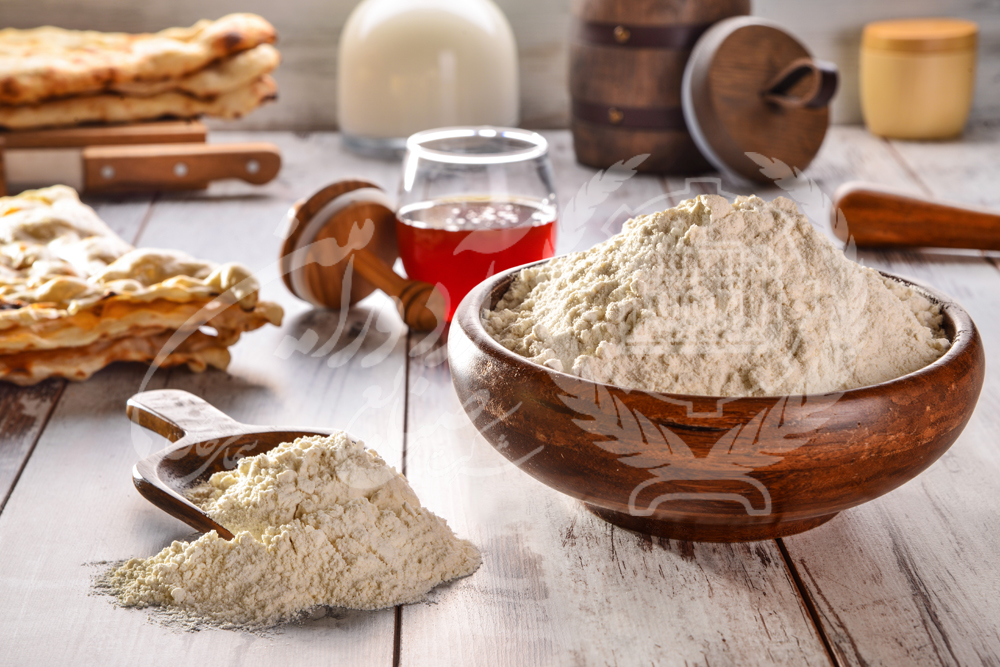
Sangak Bread Flour
This kind of flour is produced from whole endosperm and high content of bran. It is considered among dark flours and is used for producing Sangak bread. The extraction rate and high bran percentage of this flour increased its nutritional value.
Bran comprises the outer wall of the wheat and is considered as that part of the wheat having high amount of fiber, minerals and vitamins; in average the vitamin, minerals and fiber content in the Sangagk (bran based) bread is twice the clear breads. Bread’s bran prevents constipation. In addition, bran is used as the food for gut bacteria operating against microbial diseases, thus it activates the immune system of the body. The fiber materials in the bran based bread will absorb the cholesterol and toxic materials from degradation of foods and excretes it from the intestine.
The extraction rate of flour, fermentation, cooking temperature and period is effective on accessibility of elements, particularly iron, calcium and zinc. The more is the flour extraction rate, the more is the rate of bran and nutrients in the flour such as its calcium, zinc and iron content. On the other hand, the factors interfering on absorption of these elements such as fiber phytate and phytic acid will be increased followed by higher contents of nutrients in the flour with higher extraction rate reducing the accessibility of these materials due to the presence of interfering factors. Results of studies have reported the influence of fermentation on reduction of phytic acid rate in Iranian breads for two hours of fermentation about 44% in Sangagk breads and about 29% for Taftoon bread during one hour. Therefore, after fermentation in the bread and reducing its phytate rate, it will improve the absorption of elements such as calcium iron and zinc.
The permissible range determined for ash, gluten and protein by Standard Institute is according to following table:
| Ash | Gluten | Protein |
| 1.226- 1.475 | Min 24% | 11.5% |







